- Home
- TV History
- Network Studios History
- Cameras
- Archives
- Viewseum
- About / Comments
Skip to content
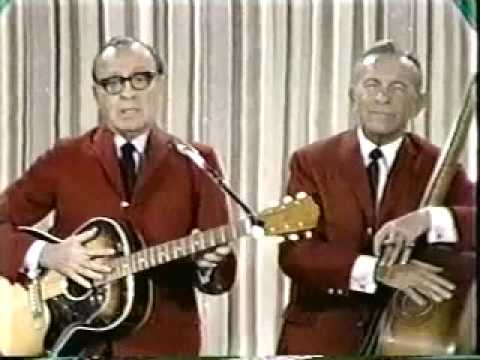



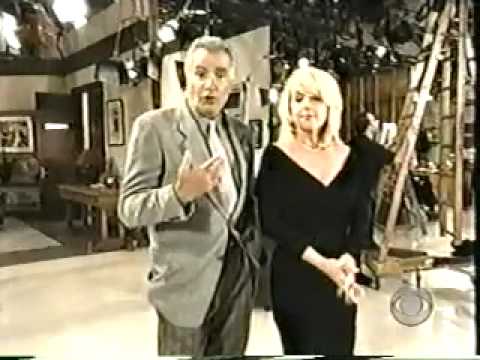

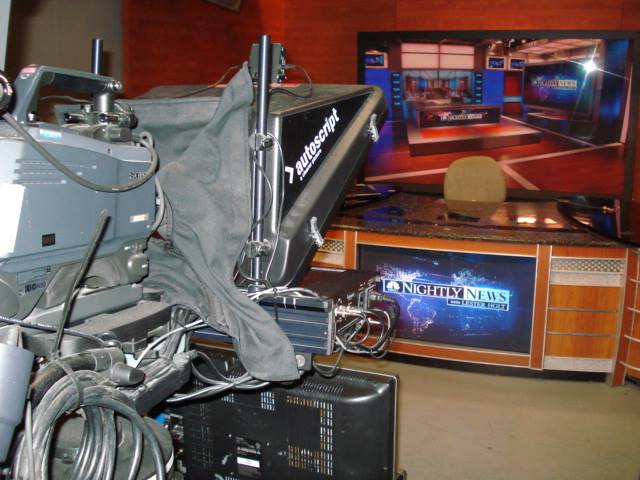

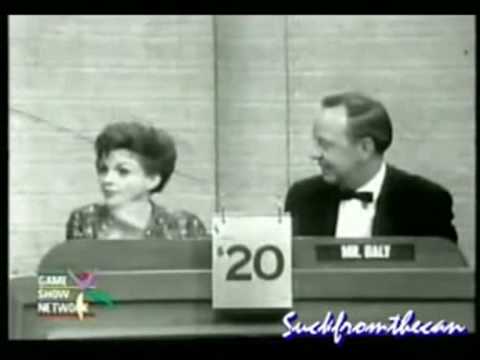



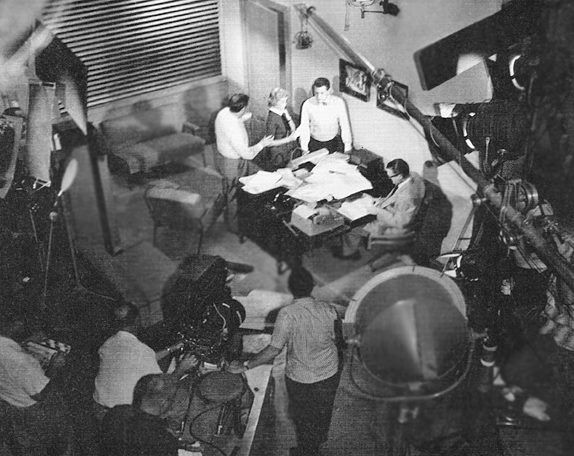

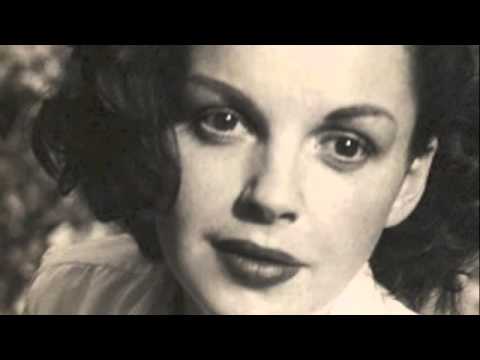

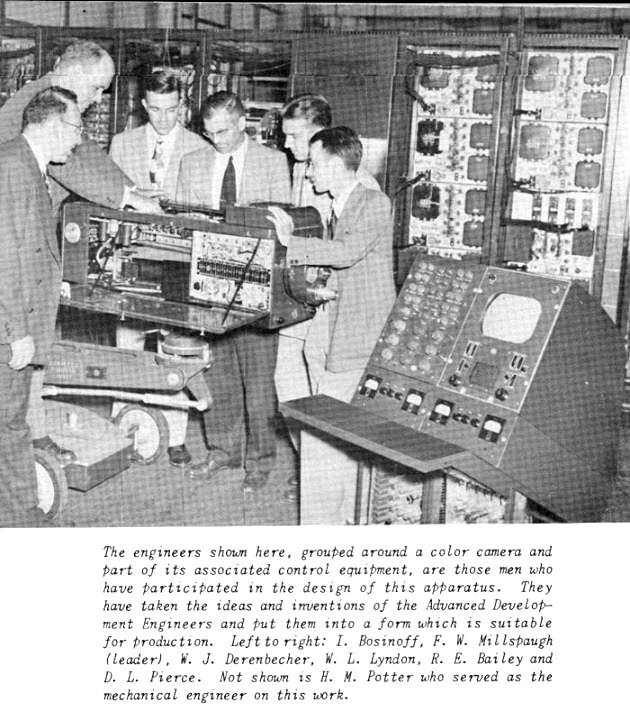

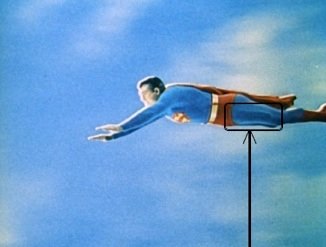

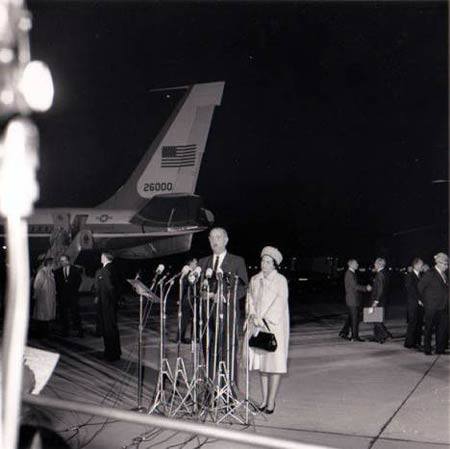

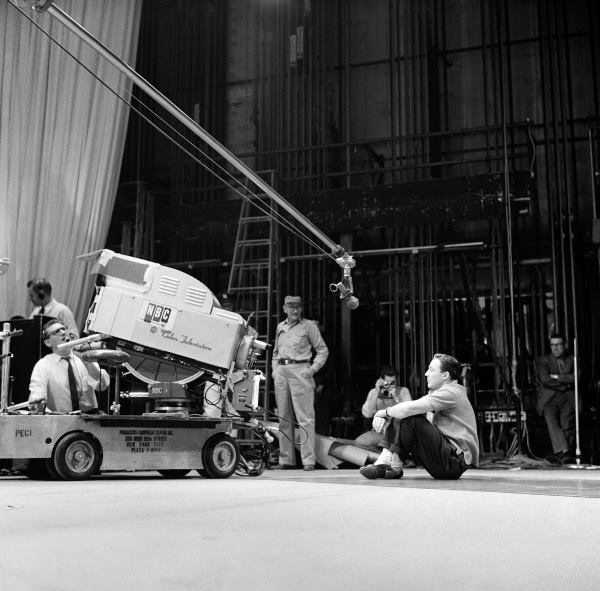



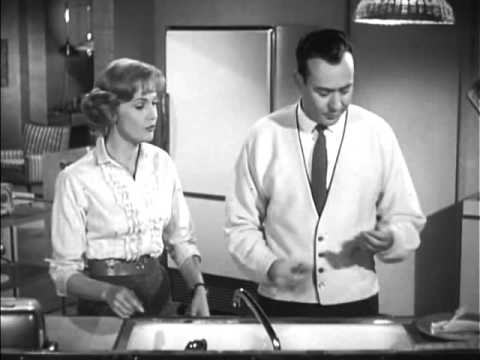

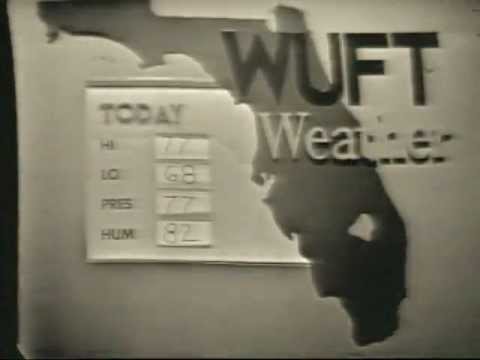

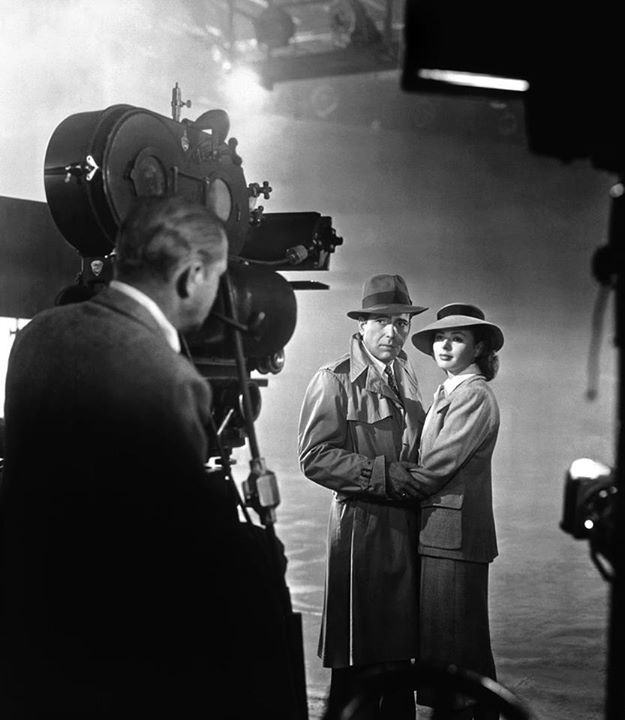

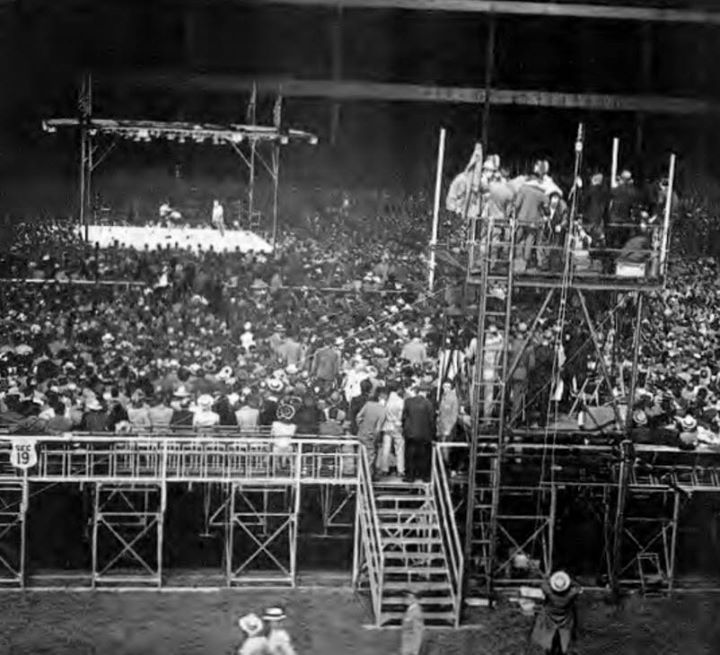



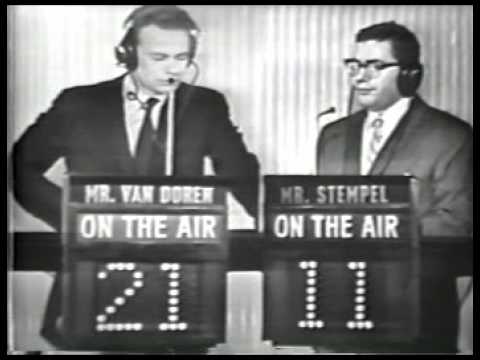

Posts in Category: TV History
Page 80 of 136
« Previous
1
2
3
4
5
6
7
8
9
10
11
12
13
14
15
16
17
18
19
20
21
22
23
24
25
26
27
28
29
30
31
32
33
34
35
36
37
38
39
40
41
42
43
44
45
46
47
48
49
50
51
52
53
54
55
56
57
58
59
60
61
62
63
64
65
66
67
68
69
70
71
72
73
74
75
76
77
78
79
80
81
82
83
84
85
86
87
88
89
90
91
92
93
94
95
96
97
98
99
100
101
102
103
104
105
106
107
108
109
110
111
112
113
114
115
116
117
118
119
120
121
122
123
124
125
126
127
128
129
130
131
132
133
134
135
136
Next » 

50 Years From CBS Television City…Part 3, The Variety Shows
On May 25, 2014
- TV History
50 Years From CBS Television City…Part 3, The Variety Shows
The Variety Show segment has two parts and this is the link to the second part. http://www.youtube.com/watch?v=ShnIw82D5js
Tom and Dick Smothers are the hosts of this segment and we start with their great show with a rundown of their production week which puts them in the studio all day Thursdays for camera blocking.
The second segment starts with Glenn Campbell and ends with an absolute must see scene from Tony Orlando with Phyllis Diller losing her wig. We’ll also see Sony and Cher, Red Foxx, The Jacksons and more. What we don’t see is Carol Burnett’s show so I’m thinking there is a third part which is not online. Enjoy and Cher?
http://www.youtube.com/watch?v=PYV11QSToAI
The Smothers Brothers host a segment on CBS 50 Years from Television City, focusing on Variety Shows. Special aired 4/27/02.


50 Years From CBS Television City…Part 2, The Talk Shows
On May 25, 2014
- TV History
50 Years From CBS Television City…Part 2, The Talk Shows
The Talk Show segment has two parts and this is the link to the second part.
http://www.youtube.com/watch?v=2fWWdxFiQFA
The first segment, hosted by Craig Kilborn features great footage from Art Linkletter, Merv Griffin, Dinah Shore, Mike Douglas and more. The second part starts with Merv Griffin talking about how most of his shows were lost to the reuse of video tape stock and continues with Tom Snyder? Yes…Tom Snyder.
After his many years on ‘Tomorrow’ at NBC (73-82), David Letterman convinced Snyder and CBS to create the ‘Late, Late Show’ to follow his show. Surprise! You’ll want to see both parts!
There’s also footage of Bill Maher, Dennis Miller and Letterman. Enjoy and Share!
http://www.youtube.com/watch?v=BkFQXtJetyo
Craig Kilborn hosts a segment on CBS 50 Years from Television City, focusing on Talk Shows. Special aired 4/27/02.


50 Years From CBS Television City…Part 1, The Soap Operas
On May 25, 2014
- TV History
50 Years From CBS Television City…Part 1, The Soap Operas
CBS dedicated its new $7 million Hollywood production and office facility, Television City, on November 15, 1952. This special with Carol Burnett as host aired in April of 2002. As you’ll see as we go, this was done during the Hitachi period at TVC and the live cameras are SK 110 models built to CBS specs. Enjoy and Share!
John McCook hosts a segment on CBS 50 Years from Television City, focusing on Soaps. Special aired 4/27/02.
Here’s Where The Weekend ‘NBC Nightly News’ Comes From
On May 24, 2014
- TV History
This is where Lester Holt anchors the weekend edition of NBC’s ‘Nightly News’ show. This is Media Room 1, which is one of four small studios inside Studio 6E, otherwise known as the Global Media Center.
The control room for all four is right next door. This was the main news desk used by Tom Brokaw and Brian Williams in 3C from 1998 till 2008. In ’08, a new set and desk was built in 3B where the weeknight show is done now. The control room for 3B is under the ‘Today’ studio in the basement of Studio 1A, across 49th Street.
Below you see the single robotic camera in the studio on the left and just to the left of the camera is a production desk with the prompter controls. That’s me at the desk and on the right, a shot of me in the monitors in front of the desk. Notice the virtual set on the wall monitor. Enjoy and share.


Judy Garland…March 5, 1967, ‘What’s My Line’
On May 24, 2014
- TV History
Judy Garland…March 5, 1967, ‘What’s My Line’
At the end, Judy mentions “Valley Of The Dolls” which puts this show and Jack Paar’s visit with her about the same time, as that was mentioned in the Paar audio posted yesterday.
https://www.youtube.com/watch?v=OIiCtk9NW_k
The great Judy Garland on What’s My Line (March 5, 1967) Enjoy! 🙂


A Parade Of 50 Years Of CBS Stars!
On May 24, 2014
- TV History
Just Amazing! A Parade Of 50 Years Of CBS Stars! Part 2
It is extremely rare to see the founder and chairman of CBS on television, but here is William S. Paley along with Walter Cronkite closing the week’s festivities with about a hundred of America’s best known faces. The long pan of stars at the end is really something to see! Enjoy and share!
http://www.youtube.com/watch?v=3Xw3KdQpcwA
From April 1, 1978, here are the last 10 minutes of the week-long special “CBS: On The Air: A Celebration of 50 Years.” This clip includes comments by CBS’ f…
More “SUPER” Rarities…
On May 23, 2014
- TV History
More “SUPER” Rarities…
So many people liked yesterday’s post, I thought we’d look deeper.
‘The Adventures Of Superman’ ran from 1952-58 and was a syndicated show sponsored by Kellogg’s. The show’s first two seasons (episodes 1–52, 26 titles per season) were filmed in black-and-white; seasons three through six (episodes 53–104, 13 titles per season) were filmed in color but originally telecast in black and white in first-run syndication. Television viewers would not see Superman in color until the series was re released in 1965.
Below left, we see a scene being shot in Clark Kent’s office at The Daily Planet. In the center is star George Reeves atop a short ladder that he used to jump off of when making a “flying” entrance. On the left is Reeves in rehearsal, without the cape, practicing a take off on the springboard and landing on the pad.
Occasionally, Superman would take off without the springboard and a running start. In those sequences, that start in a flat footed crouch, wires were used. Reeves would perform the move and make a leap, but then a stunt double was brought in with his wire harness to repeat the move which was shot from a different angle to hide the face.


Judy Garland…Jack Paar’s Storytelling At It’s Best
On May 23, 2014
- TV History
Judy Garland…Jack Paar’s Storytelling At It’s Best
Aside from Television City, the other part of our Memorial Day Weekend special features include the great, Judy Garland.
This is a very rare audio recording made by Jack Paar about a day he spent with Judy in Hollywood. Paar is a legendary storyteller and this is the best example of that ability, I have ever heard.
I found this last week and have wrestled with it ever since. Although Jack’s story and his touch are beautifully told and as gentle as possible, some sad truths about Mrs. Garland come to light here. I’ve wondered whether to post this or not, but given the quality of the tale, have decided to go ahead with the following notes.
First, Bless Her Heart! Judy Garland is without a doubt one of the most talented people in the entire history of entertainment which dates back to the Greek tragedies of 534 BC. Ironically, her life mirrored the joy and pain of those ancient productions almost to a tee.
I have been around fame and famous people most of my life and I can tell you that it comes with a heavy price. For most of her life, she was not just a star, but a superstar and that comes with an unbelievable burden and a lot of insecurity. I think the only thing that was ever real to her was her children, as certainly everything else was surreal in the best and worst of ways.
God Bless You Judy! Bobby Ellerbee
https://www.youtube.com/watch?v=D31747Wy2YY
DISCLAIMER: Although we believe that Jack Paar was sincere in his intentions, he is factually off base on several points, and sensationalizes others. The gen…
Ultra Rare! RCA TK40 Prototype Color Camera…November 1952
On May 23, 2014
- TV History
Ultra Rare! RCA TK40 Prototype Color Camera…November 1952
Since posting this a year or so ago, new details on the first use of this camera have surfaced. As you remember, a few months back, I published the first and only timeline history of the NBC New York Studios. While doing that research, a tiny blurb in Broadcasting Magazine’s November 17, 1952 issue unlocked the mystery of just when the RCA TK40s were first used. It was November 8, 1952 and the occasion was a special broadcast of ‘Your Show Of Shows’ from The Colonial Theater.
‘Your Show Of Shows’ was usually done at The International Theater on Columbus Circle, but on that Saturday night, it came from The Colonial. The show was not broadcast in color as the FCC had not approved the Dot Sequential process yet, nor had they approved a special test permit, but it was a good test of the new cameras to show how sharp their monochrome output was to the many affiliates interested in how color broadcasts would look on black and white receivers. RCA and NBC engineers saw it in color on a closed circuit feed to 30 Rock and Princeton NJ.
The photo shows one of the prototypes and the engineers who were mostly responsible for it’s development and those names are in the caption. It’s interesting to note that the camera is painted RCA’s famous umber gray and on the side rear, we see a focus knob and not the now familiar panhandle focus.
Most of the “famous” color broadcasts from The Colonial came in late 1953 and early ’54. The cameras needed a year or so of field testing before they were ready for that and monitors and control equipment was still being tested and developed in NBC Studio 3H and in Princeton.
The TK40s did not go into production till March of ’54 and by then, several changes were made based on experience gained at The Colonial. The first change was the camera’s color from umber to silver that better reflected heat. That lesson was learned at a summer remote.
The second change was the position of the focus demand that moved from the side knob to the pan handle. The camera was too big for one handed operation and the cameramen also like the old Iconoscope style demand better.
The third change was the pan head. The Colonial cameras were originally mounted on the old friction type pan heads, but they were too small in two ways. First, their support plate put too much weight on the belly of the camera which needed more distribution. Second, they could “get away” from you on a steep tilt. The answer was the Houston Fearless cradle head. A prototype was made for two of the four cameras and it worked great. When the TK40 went into production, it was supplied with the cradle head and at the same time, the smaller cradle for black and white cameras became available. Enjoy and share.
‘Superman’…Rarities From Radio & Television
On May 22, 2014
- TV History
‘Superman’…Rarities From Radio & Television
This is Superman’s “flying pan” which was used by George Reeves in ‘The Adventures Of Superman’, that many of us grew up watching. After a few falls from wire suspension, on which was fairly serious, the pan was developed for Reeves to lay in and tilting and rolling was controlled by a long lever.
Often you can see it under his suit if you know what to look for. Included is a drawing of the device in use and that is the actual pan which is now in the Superman Museum in, wait for it…Metropolis, Illinois. Enjoy and Share!
NBC Director Max Schindler’s Day….November 22, 1963
On May 22, 2014
- TV History
NBC Director Max Schindler’s Day….November 22, 1963
At the link is our friend Max Schindler’s account of the arrival of President Kennedy and President Johnson from Dallas. He was the director sent to cover the arrival for NBC in Washington, and as it turns out, for CBS and ABC too, as his truck was the only one that had been linked to AT&T lines.
In the first eight or so minutes, Max describes the incredible drama of the day and the many unknowns at they went to air. He helped direct the funeral a few days later and speaks of that as well as the MLK “I Have A Dream” speech which he covered.
Schindler later started a two decade long association with ‘Meet The Press’ in 1965 and directed the show for over 20 years. As a director, he was very highly regarded at the time, and, in the 70s, he was the coverage director when other important events, such as the Watergate, the Iran hostage crisis and the Pope’s visits to the United States occurred.
Schindler’s work in television has influenced many to-be directors through his six decade work as a director, producer, and cameraman.
December 21, 1958…’Dancing: A Man’s Game’ With Gene Kelly
On May 22, 2014
- TV History
December 21, 1958…’Dancing: A Man’s Game’ With Gene Kelly
NBC’s great ‘Omnibus’ program, which I remember well, was a wide ranging show that on one Sunday afternoon included a half hour segment conceived, written and narrated by Gene Kelly.
Assisted by the top names in sport, like Mickey Mantle, Sugar Ray Robinson and Johnny Unitas, Kelly sets out to demonstrate the rhythm and coordination required of great athletes. He also traces the history of modern American dance, and sets out to prove that dancing is, not the property of women but that, rightfully, it’s “a man’s game.”
The show was done at NBC Brooklyn and the cameraman in the black and white photo is Don Mulvaney (who by the way was also the main crane cameraman on Perry Como and the original crane cameraman on ‘Saturday Night Live’). The color photo is from another scene in the show.
At the clip is one of the only known pieces of the kinescope of the show. Enjoy and share!


Quite Rare: Barbara Walters…The Lucy Interview, 1977
On May 21, 2014
- TV History
Quite Rare: Barbara Walters…The Lucy Interview, 1977
This is the only known full presentation of Walters’ famous interview with Lucille Ball. Unfortunately, there are not many surviving interviews with Lucy, and none as in depth or as deep as this one. This is Barbara at her best! Enjoy and share.
http://www.youtube.com/watch?v=xQR5BzN4EKg
Along with having Dolly Pardon, Henry Winkler, and Stacy Weitzerman as guests for her 1977 Special, Barbara Walters also sits down with Lucy and Gary Morton….


‘The Dick Van Dyke Show’…Full Pilot Episode
On May 21, 2014
- TV History
‘The Dick Van Dyke Show’…Full Pilot Episode
This is part of the text from the Emmy Legends story on the pilot show called ‘Head Of The Family’ that starred Carl Reiner as Rob Petrie. Read on…
Back in the summer of 1958, Carl Reiner, already an established writer and supporting actor on Sid Caesar’s ‘Your Show of Shows’, sought to create a sitcom in which he would star. He followed the adage of “write what you know” and created thirteen scripts of ‘Head of the Family’, a largely autobiographical series centered around Rob Petrie, head writer of “The Alan Sturdy Show.” Rob was married to Laura, they had a six-year-old son, Ritchie, and Buddy and Sally were Rob’s cohorts in the writers’ room. Sound familiar?
Reiner’s agent, Harry Kalcheim, shopped the Head of the Family pilot script around, and actor Peter Lawford wanted to front the money to shoot the pilot. Once Reiner sent a script to Lawford’s father-in-law and supplier of the cash, Joseph P. Kennedy, Reiner was given the green light.
The pilot was shot in December of 1958 in New York, with Reiner starring as Rob, Barbara Britton as Laura, Gary Morgan as Ritchie, Sylvia Miles as Sally, and Morty Gunty as Buddy. And then … nothing. The pilot failed to sell for the Fall 1959 season, and for the next year, Reiner thought the project was dead. But Kalcheim refused to abandon the show. He presented the pilot episode to another client of his, producer Sheldon Leonard.
Already a successful creator/producer of The Andy Griffith Show, and producer of The Danny Thomas Show, Leonard recognized genius in Head of the Family, but identified one major flaw: Reiner completely miscast himself as Rob Petrie. It’s difficult to see how Reiner could be wrong for a role that he based on himself, but Reiner was a natural sketch performer, not a sitcom actor.


Ultra Rare! Cronkite Goodbye To Huntley, & Huntley – Brinkley Finale
On May 20, 2014
- TV History, Viewseum
Ultra Rare! Cronkite Goodbye To Huntley, & Huntley – Brinkley Finale
That I know of, this old demo tape from long time Miami news man Bob Mayer is the best, and one of the only captures of Walter Cronkite’s farewell to Chet Huntley, which even includes an unheard of insert from Huntley. AND, immediately following the CBS News credit roll, is the final few minutes of ‘The Huntley – Brinkley Report’. All in good quality color.
This all happened July 31, 1970, fourteen years after their start on NBC on October 29, 1956.
Spoiler Alert…They Weren’t Really In Casablanca, OR Outside!
On May 20, 2014
- TV History
Spoiler Alert…They Weren’t Really In Casablanca, OR Outside!
Just for fun, here’s a shot of the final scene of ‘Casablanca’ filmed around August 2, 1942. The whole picture was shot on the Warner back lot except for the sequence showing Major Strasser’s arrival, which was filmed at Van Nuys Airport, and a few short clips of stock footage views of Paris.
This scene on the “runway” was purposefully over fogged to hide the deficiencies in the cardboard mock up of a Lockheed Electra which had very short extras around it to help cheat the proportionality. Speaking of cheating, Bogart was two inches shorter than Bergman, so…like in this scene, he stood on blocks and sat on pillows to hide the difference.
June 19, 1946…The debut of the RCA TK30s…
On May 19, 2014
- Archives, TV History
The debut of the RCA TK30 Image Orthicon camera was live in half of the nation and on kinescope for the rest, so this better be good! And it was! This was trial by fire.
RCA worked so fast to get six TK30s to NBC in New York for the Lewis-Conn rematch at Yankee Stadium, the art department didn’t even have time to cut and paste photos of the cameras in their pre fight ads that ran in May of 1946.
In the photos on the right and left, you see the first TK30s ever used anywhere…even on a local NBC NY show. The introduction date was officially set for October of ’46, but the Lewis-Conn rematch was such a big deal that production was moved up to get at least a few in service for the fight. NBC covered the fight on radio and television on the full network. This was television’s first ever coverage of a World Heavyweight Championship bout.
In the RCA ad in the center we see the immediate predecessor to the TK line of Image Orthicon cameras. These are RCA Orthicon cameras…better than Iconoscopes, but still not half the quality of the IO cameras.
Here’s a little history on this Lewis-Conn rematch…one long delayed by WWII. In 1942, Conn beat Tony Zale and had an exhibition with Louis. World War II was at one of its most important moments, however, and both Conn and Louis were called to serve in the Army. Conn went to war and was away from the ring until 1946.
By then, the public was clamoring for a rematch between him and the still world Heavyweight champion Louis. This happened, and on June 19, 1946, Conn returned into the ring, straight into a world Heavyweight championship bout. Before that fight, it was suggested to Louis that Conn might outpoint him because of his hand and foot speed. In a line that would be long-remembered, Louis replied: “He can run, but he can’t hide.” The fight, at Yankee Stadium, was the first televised world Heavyweight championship bout ever, and 146,000 people watched it on TV, also setting a record for the most seen world Heavyweight bout in history. Most people who saw it agreed that both Conn and Louis’ abilities had eroded with their time spent serving in the armed forces, but Louis was able to retain the crown by a knockout in round eight.
Reports on the television coverage were glowing too! These cameras had delivered the clearest, sharpest pictures ever and with four lenses on the turret, were able to offer a never before available range of shots per camera with 24 views of the action.
This Rare Color Photo Reveals More Than You Know!
On May 19, 2014
- TV History
This Rare Color Photo Reveals More Than You Know!
There are two other photos like this, but this is the only color version. Each description of these similar images eludes to a “studio tour”, and show 1930 era visitors being shot by an RCA field camera and seeing themselves in a monitor. These photos had baffled me till about a month ago when I made a magnificent find!
I always knew this was not inside NBC Studio 3H, but that was the only working NBC television facility from 1935, till 8G came along in 1948. So, where was this “studio”? At the 1939 World’s Fair!
Just before I left for New York, I was digging through some books on television given to me by Robert Forman some time back. There were several Xeroxed copies of interesting magazine articles, but one that I had somehow overlooked jumped out at me.
It is the second only known copy of “America’s First Television Tour”…the 30 page booklet created by RCA/NBC for visitors to the RCA Pavillion at the 1939 World’s Fair. As far as I know, no one had ever written about the studio and live camera inside the RCA Pavillion.
We knew that you could see yourself on TV there, but photos of people being “televised” are mostly all outside where there is plenty of light. It turns out that there was an elaborate studio display inside the pavilion, and possibly included the old “Felix The Cat” mechanical camera from the early 30s.
The book and the find were exciting enough, but low and behold, there was yet another surprise! Included in the bound pages were two letters at the end. One letter was from Mr. Foreman, which accompanied the original booklet, to the Museum Of Broadcasting in New York where it is now included in their archives.
The other letter was a reply and thank you for the donation dated April 28th, 1988. The letter was signed by our friend Ron Simon who was the Television Curator at the Museum Of Broadcasting, which is now The Paley Center For Media. I met with Ron April 30th…almost exactly 26 years after he sent the letter. I took him a copy and we both had a good laugh at the serendipity of the whole thing. Although it would make a huge post (in more than one way), I will try to get a copy of this rare piece of broadcast history online soon.
Speaking of serendipity, this photo was sent to me a few months back by our friend Jodie Peeler who teaches journalism at Newberry College. She’ll be here at my house around noon today to see my camera collection. Small World? You Bet!


History’s Most Infamous Game Show Footage…’Twenty One’
On May 18, 2014
- TV History
History’s Most Infamous Game Show Footage…’Twenty One’
This show was done live from NBC Studio 6B, Wednesday night, November 19, 1956. This was the fourth and final round of play on ‘Twenty One’ between Charles Van Doren and Herb Stempel. The other three were tie games…21 to 21.
The video is Qed to the point where MC Jack Barry asks Stemple the famous “Marty” question. This is the whole episode and is very interesting to watch in full. Anyone who is a fan of the movie “Quiz Show” will certainly appreciate seeing the real thing.
For the younger crowd, this was ground zero of the quiz show scandals that hit television in 1958. At this link (and copied in full below) is a very good PBS ‘American Experience’ write up of the details.
http://www.pbs.org/wgbh/amex/quizshow/peopleevents/pande01.html
Notice in the video that the headsets for both have different ear cups on each set. These headphones were modified by NBC engineers, with one side allowing them to hear the questions from Jack Barry, and that only. The other side allows them to hear the other contestant when they get to face off at the end of the game.
On March 11, 1957, Van Doren was finally upset by Vivienne Nearing, a lawyer whose husband Van Doren had previously beaten. Enjoy and share!
THE QUIZ SHOW SCANDAL | ARTICLE
Herbert Stempel
Before the TV Quiz Show Scandal broke in the late 1950s, Herbert Stempel was destined to be a little-remembered contestant on the NBC quiz show “Twenty-One.” However, as the man who helped expose Charles Van Doren, the most famous quiz show contestant of all, Stempel earned a place in television history.
When Stempel was chosen as a contestant, he was a 29-year old college student, who had a prodigious memory and a remarkable fund of knowledge. He had graduated from the prestigious Bronx High School of Science and had scored an impressive 170 on an IQ test. He worked at the Post Office before enlisting in the army in 1944. He left the army in 1952 to attend City College of New York on the G.I. Bill.
Like millions of other Americans, Stempel had watched the popular TV quiz shows of the day. After seeing two telecasts of “Twenty-One,” Stempel wrote a letter to Barry and Enright Productions, the show’s producers. He wrote, introducing himself as a married man with a 14-month old son and went on to give the reasons why he believed he would be a strong contestant:
Doctors have told me and many of my friends say that I have a very retentive, if not photographic memory, and I have thousands of odd and obscure facts and many facets of general information at my fingertips. I have stayed home continuously watching many television shows and I answer so great a bulk of the questions that my wife has continually urged me to try out for your fine show.
A few days later, Stempel received a reply and was invited in. After he took the 3 1/2-hour test he was called by the staff producer. Stempel had answered 251 items out of 363 successfully, the producer told him, the best test performance on the show until that time. Stempel was to be a contestant.
“You want the viewer to react emotionally to a contestant,” explained Daniel Enright, one of the producers of “Twenty-One.” “Whether he reacts favorably or negatively is really not that important. The important thing is that he react.” Enright believed viewers would react negatively to Stempel. “[They] would watch him and pray for his opponent to win.”
Enright visited Stempel at his home and told his new contestant: “Play ball with me kid and you’ll win $24,000 just like that.” Over the next five weeks, Enright would sit down with Stempel and go over particular questions and answers before each show — including deliberate mistakes. The two would also discuss stage directions, including gestures to use, when to pause and what exactly to say. In the dressing room before each session, both men would do a run-though to make sure Stempel knew the script for that evening.
Stempel was aware of the game plan and learned it well. “The reason I had been asked to put on this old, ill-fitting suit and get this Marine-type haircut was to make me appear as what you would call today, a nerd, a square,” Stempel remembers. As planned, Stempel came across as a somewhat smug contestant who struck viewers as a know-it-all.
Stempel’s string of successes brought him close to $50,000, no small change at the time. Stempel’s final opponent was Columbia University English professor Charles Van Doren. Enright scripted what would happen next: Three ties would ensue. When that happened, Stempel figured Van Doren was also in on the fix. Before the fourth and final match between the two men Enright told Stempel that while he had brought the ratings up, they had reached a plateau. “We feel it is time for a change,” Enright told Stempel. That change was clearly the well-bred Van Doren.
Before Stempel’s last appearance, he asked Enright if he could play honestly against Van Doren, arguing that the match was really a duel between his CCNY versus Van Doren’s Columbia University. Enright again explained that the success of the show necessitated Stempel’s leaving and told Stempel that he might be able to find him a full-time job on a quiz show down the road.
On the morning of Stempel’s last show, promotions were aired featuring Jack Barry, the host of “Twenty-One,” saying: “Tonight, here on “Twenty-One,” Herbert Stempel, our 29-year-old G.I. college student, can win $111,500 — the highest amount of money ever to be won on television.” Stempel remembers the spot. “Every few minutes, an announcement would break in saying, ‘Is Herb Stempel going to win over $100,000 tonight?’ and I said, ‘No, he is not going to win $100,000. He’s going to take a dive.’”
On the show that evening, in a decisive question, Stempel was asked, “What motion picture won the Academy Award for 1955?” Stempel knew the answer was “Marty” — it was one of his favorite movies. But instead of answering correctly, Stempel gave the answer “On the Waterfront.” With Stempel’s scripted blunder, Van Doren became the new “Twenty-One” champion.
Backstage after the show, Stempel overheard someone say, “Now we have a clean-cut intellectual as champion instead of a freak with a sponge memory.” Afterwards, Stempel fumed about his loss and Van Doren’s fast-rising popularity — something Stempel had never gained during his reign as champion.
Before he lost, Stempel had told several friends, including reporter Dave Gelman of “The New York Post,” that the show was fixed. But no one took Stempel seriously, and his whistle-blowing fell on deaf ears. It wasn’t long before Stempel lost all his earnings. In early 1957, he started appearing at Enright’s office regularly demanding more money or a job.
Fearing blackmail, Enright convinced Stempel to sign a document stating that he had not received any help with his answers. In return, Stempel now was promised a panelist slot on a future program after his college graduation. In June 1957, the promised job fell through when Enright said all his shows had been sold to NBC. A bitter Stempel went back to the press. This time he talked to the New York “Journal-American,” which investigated the charges but could find no corroborating witnesses, and thus didn’t print Stempel’s story.
When the rigging of the CBS game “Dotto” show was revealed in May 1958, official sources finally listened to Stempel. In August 1958 the “Journal-American” finally published Stempel’s accusations.
Van Doren, who had repeatedly denied Stempel’s charges, finally confessed to being part of the fix before a Congressional committee investigating quiz shows. Yet when the hearings were over, the crowd of reporters mobbed Van Doren, making it clear that Van Doren, whether a star or confessed liar, still outshone the vindicated Stempel.
Page 80 of 136
« Previous
1
2
3
4
5
6
7
8
9
10
11
12
13
14
15
16
17
18
19
20
21
22
23
24
25
26
27
28
29
30
31
32
33
34
35
36
37
38
39
40
41
42
43
44
45
46
47
48
49
50
51
52
53
54
55
56
57
58
59
60
61
62
63
64
65
66
67
68
69
70
71
72
73
74
75
76
77
78
79
80
81
82
83
84
85
86
87
88
89
90
91
92
93
94
95
96
97
98
99
100
101
102
103
104
105
106
107
108
109
110
111
112
113
114
115
116
117
118
119
120
121
122
123
124
125
126
127
128
129
130
131
132
133
134
135
136
Next »